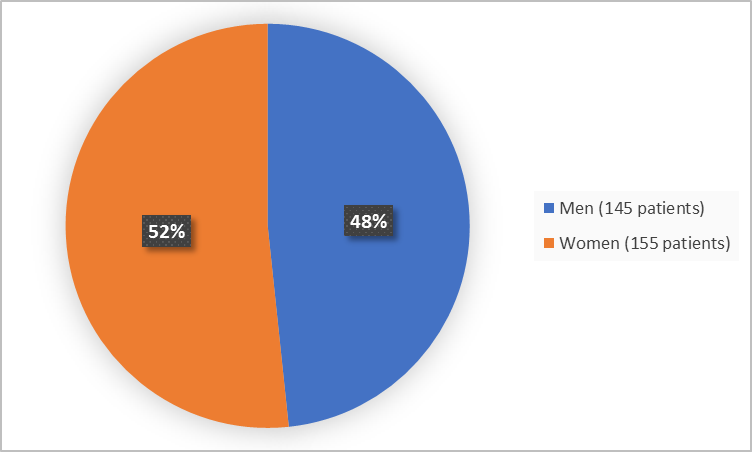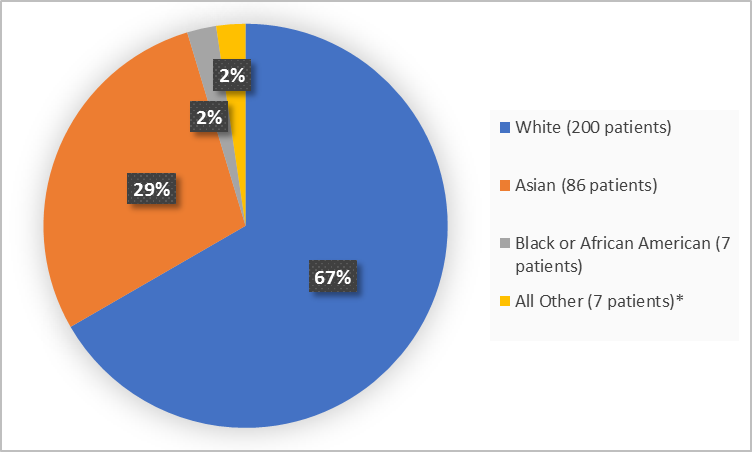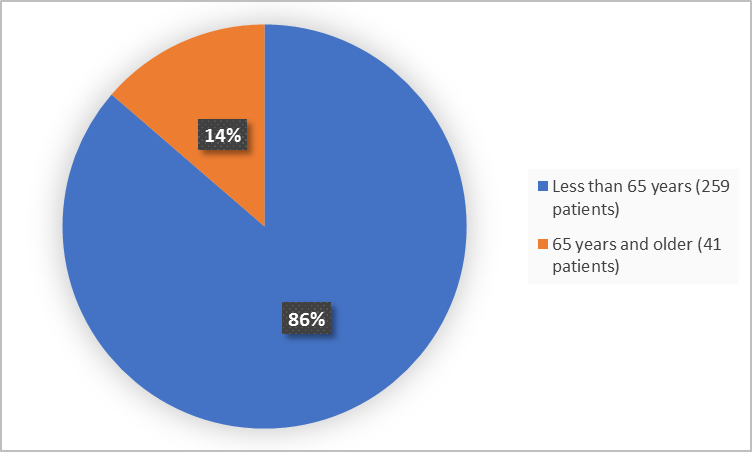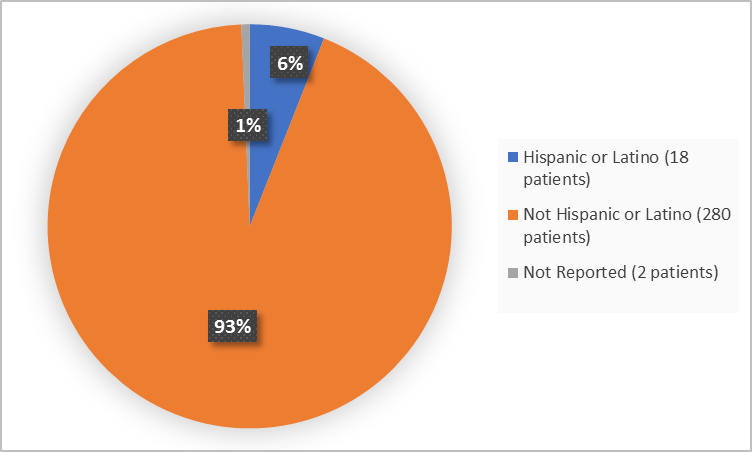Drug Trial Snapshot: SOGROYA
HOW TO USE THIS SNAPSHOT
The information provided in Snapshots highlights who participated in the clinical trials that supported the FDA approval of this drug, and whether there were differences among sex, race and age groups. The “MORE INFO” bar shows more detailed, technical content for each section. The Snapshot is intended as one tool for consumers to use when discussing the risks and benefits of the drugs.
LIMITATIONS OF THIS SNAPSHOT:
Do not rely on Snapshots to make decisions regarding medical care. Always speak to your health provider about the risks and benefits of a drug. Refer to the SOGROYA Package Insert for complete information.
SOGROYA (somapacitan-beco)
(suh-GROY-uh)
Novo Nordisk Inc.
Approval date: August 28, 2020
DRUG TRIALS SNAPSHOT SUMMARY:
What is the drug for?
SOGROYA is a drug for replacement of growth hormone in adults with growth hormone deficiency (GHD).
GHD is a condition when body doesn’t produce enough growth hormone on its own. Growth hormone regulates many functions in the body including accumulation of fat in the trunk or central area of the body that can be associated with serious medical issues.
How is this drug used?
SOGROYA is an injection given under the skin (subcutaneously) once every week
What are the benefits of this drug?
At the end of the trial, patients with GHD who were treated with SOGROYA experienced decrease of truncal fat percentage in comparison to placebo-treated patients who experienced increase in truncal fat percentage.
What are the benefits of this drug (results of trials used to assess efficacy)?
Efficacy results from the trial are presented below. The primary endpoint was the reduction of truncal fat percentage (%) as assessed by dual X-ray absorptiometry.
Table 1: Truncal Fat % Results for Weekly SOGROYA, Weekly Placebo and Daily Somatotropin During the 34-week Trial
|
Change from baseline at 34 weeks |
Weekly |
Weekly |
Daily |
|---|---|---|---|
|
Number of subjects in FAS (N) |
61 |
120 |
119 |
|
Truncal fat % (baseline) |
36.9 |
39.11 |
38.10 |
|
Truncal fat %
|
0.47 |
-1.06 |
-2.23 |
|
Absolute Treatment Difference (%)* [95% Confidence Interval] p-value |
-1.53 [-2.68; -0.38] 0.0090 |
|
|
FAS = Full analysis set, N = Number of patients in FAS. Changes in truncal fat % from baseline to 34 weeks were analyzed using an analysis of covariance model with treatment, GHD onset type, sex, region, diabetes mellitus status and sex by region by diabetes mellitus interaction as factors and baseline as a covariate incorporating a multiple imputation technique where missing week 34 values were imputed based on data from the placebo group
*No formal statistical comparison between SOGROYA and Somatotropin was performed.
SOGROYA Prescribing Information
Were there any differences in how well the drug worked in clinical trials among sex, race and age?
- Sex: SOGROYA worked similarly in men and women.
- Race: SOGROYA worked similarly in Whites and Asians. The number of patients of other races was small; therefore, differences in how the drug worked in other races could not be determined.
- Age: SOGROYA worked similarly in all age groups tested.
Were there any differences in how well the drug worked in clinical trials among sex, race, and age groups?
The subgroup analyses of primary endpoint are presented below.
Table 2. Change from Baseline to Week 34 in Truncal Fat % by Sex , Race, and Age
|
Truncal fat % Change from Baseline |
SOGROYA |
Placebo |
Difference* |
95% CI* |
|---|---|---|---|---|
|
Sex |
||||
|
Women |
-0.57 |
0.35 |
-1.26 |
(-2.70, 0.27) |
|
Men |
-1.69 |
0.80 |
-1.91 |
(-3.52, -0.40) |
|
Race |
||||
|
White |
-0.86 |
0.34 |
-1.36 |
(-2.67, -0.04) |
|
Asian |
-1.63 |
-0.41 |
-1.58 |
(-3.35, 0.17) |
|
Age |
||||
|
Age < 65 years |
-0.98 |
0.73 |
-1.64 |
(-2.86, -0.42) |
|
Age ≥ 65 years |
-2.16 |
-0.65 |
-1.61 |
(-3.28, 0.04) |
* Treatment differences and credible intervals may not match values of (treatment - control) since estimates include relevance of outcomes from other subgroups.
FDA Statistical Review
What are the possible side effects?
SOGROYA may cause serious side effects including:
- Increased risk of growth of cancer that is already present and increased risk of the return of cancer
- New or worsening high blood sugar
- Increased intracranial pressure (pressure in the skull)
- Serious allergic reactions
- Body fluid retention
- Decreased adrenal and thyroid gland function
- Inflammation of pancreas and
- Loss of fat tissue at the injection site
The most common side effects are back pain, joint pain, indigestion, sleep problems, dizziness, tonsillitis, swelling of the extremities, vomiting, decreased adrenal gland function, increased blood pressure, increase of blood creatine phosphokinase (type of enzyme), weight gain, and anemia.
What are the possible side effects (results of trials used to assess safety)?
Table 3 shows the frequency of adverse reactions occurring in >2% of patients treated with SOGROYA and more frequently than in placebo-treated patients.
Table 3. Adverse Reactions occurring >2% in Adults with GHD Treated with SOGROYA and More Frequently# than in Placebo-Treated Patients for 34 Weeks
|
|
Placebo (N=61) |
SOGROYA (N=120) |
|---|---|---|
|
Adverse Reactions |
% |
% |
|
Back pain |
3.3 |
10 |
|
Arthralgia |
1.6 |
6.7 |
|
Dyspepsia |
3.3 |
5 |
|
Sleep disorder |
1.6 |
4.2 |
|
Dizziness |
1.6 |
4.2 |
|
Tonsillitis |
1.6 |
3.3 |
|
Peripheral edema |
1.6 |
3.3 |
|
Vomiting |
1.6 |
3.3 |
|
Adrenal insufficiency |
1.6 |
3.3 |
|
Hypertension |
1.6 |
3.3 |
|
Blood creatine phosphokinase increase |
0 |
3.3 |
|
Weight increased |
0 |
3.3 |
|
Anemia |
0 |
2.5 |
# Included adverse reactions reported with at least 1% greater incidence in SOGROYA group compared to the placebo group
SOGROYA Prescribing Information
Were there any differences in side effects among sex, race and age?
- Sex: The occurrence of side effects was similar in men and women.
- Race: The majority of patients were White. The number of patients in other races was small. Therefore, differences in side effects among races could not be determined.
- Age: The majority of patients were younger than 65 years of age. The number of patients older than 65 years of age was small. Therefore, differences in side effects in patients older than 65 years of age could not be determined.
Were there any differences in side effects of the clinical trials among sex, race, and age groups?
The subgroup analyses of adverse events in pooled safety population from drug development are presented below. Racial analyses were not conducted because of predominance of White race.
Table 4. Subgroup Analyses of Adverse Events
|
|
Placebo n/N (%) |
SOGROYA n/N (%) |
|---|---|---|
|
Men |
||
|
All adverse events |
18/29 (62.1) |
125/164 (76.2) |
|
Serious adverse events |
2/29 (6.9) |
17/164 (10.4) |
|
Women |
||
|
All adverse events |
28/32 (87.5) |
150/169 (88.8) |
|
Serious adverse events |
3/32 (9.4) |
12/169 (7.1) |
|
Age <65 years |
||
|
All adverse events |
37/51 (72.5) |
229/281 (81.5) |
|
Serious adverse events |
4 /51 (7.8) |
24/281 (8.5) |
|
Age ≥65 years |
||
|
All adverse events |
9/10 (90) |
46/52 (88.5) |
|
Serious adverse events |
1/10 (10) |
5/52 (9.6) |
Adapted from FDA Review
WHO WAS IN THE CLINICAL TRIALS?
Who participated in the clinical trials?
The FDA approved SOGROYA based on evidence from one clinical trial (NCT02229851) of 300 adult patients with growth hormone deficiency. The trial was conducted at 92 sites in 16 countries: United States, Australia, Germany, India, Japan, Latvia, Lithuania, Malaysia, Poland, Romania, Russian Fed, South Africa, Sweden, Turkey, Ukraine and United Kingdom.
Figure 1 summarizes how many men and women were in the clinical trial.
Figure 1. Demographics by Sex
FDA Review
Figure 2 summarizes the percentage of participants by race.
Figure 2. Demographics by Race
*Includes Native Hawaiian or Other Pacific Islander, Other, and Not reported
FDA Review
Figure 3 summarizes participants by age.
Figure 3. Demographics by Age
FDA Review
Figure 4 summarizes participants by ethnicity
Figure 4. Demographics by Ethnicity
FDA Review
Who participated in the trials?
Demographics data of trial participants are presented below.
Table 5 . Demographics of Trial Participants- FAS
|
Demographic Characteristic |
Placebo N=61 |
SOGROYA N=120 |
Somatropin N=119 |
Total N=300 |
|---|---|---|---|---|
|
Sex, n (%) |
||||
|
Men |
29 (47.5) |
58 (48.3) |
58 (67.2) |
145 (48.3) |
|
Women |
32 (52.5) |
62 (51.7) |
61 (32.8) |
155 (51.7) |
|
Race, n (%) |
||||
|
White |
42 (68.9) |
82 (68.3) |
76 (63.8) |
200 (66.7) |
|
Asian |
16 (26.2) |
34 (28.3) |
36 (30.2) |
86 (28.7) |
|
Black or African American |
2 (3.3) |
2 (1.7) |
3 (2.5) |
7 (2.3) |
|
Native Hawaiian or Other Pacific Islander |
0 |
1 (0.8) |
0 |
1 (0.3) |
|
Other |
1 (0.8) |
1 (1.6)) |
2 (1.7) |
4 (1.3) |
|
Not Reported |
0 |
0 |
2 (1.7) |
2 (0.7) |
|
Age (years) |
||||
|
Median (min, max) |
46 (23, 76) |
44 (23, 75) |
46 (23, 77) |
45 (23, 77) |
|
Age Group, n (%) |
||||
|
<65 years |
51 (83.6) |
107 (89.2) |
101(84.9) |
259 (86.3) |
|
≥65 years |
10 (16.4) |
13 (10.8) |
18 (15.1) |
41 (13.7) |
|
Ethnicity, n (%) |
||||
|
Hispanic or Latino |
4 (6.6) |
6 (5.0) |
8 (6.7) |
18 (6.0) |
|
Not Hispanic or Latino |
57 (93.4) |
114 (95.0) |
107 (89.9) |
280 (93.3) |
|
Not Reported |
0 |
0 |
2 (1.7) |
2 (0.7) |
|
Geographic Region, n (%) |
||||
|
USA |
14 (23.0) |
31 (25.8) |
34 (28.6) |
79 (26.3) |
|
Rest of the World |
47 (77.0)) |
89 (74.2) |
85 (71.4) |
221 (73.7) |
FDA Review
How were the trials designed?
The benefit and side effects of SOGROYA as a replacement therapy for GHD were assessed in one trial.
Adult patients were assigned at random to weekly SOROGOYA or placebo injections for 34 weeks. Neither the patients nor the investigators knew which treatment was given until the end of the trial. One additional group of patients with GHD received daily injections of somatotropin (an approved treatment for GHD).
The benefit of SOROGOYA was assessed by measuring a change in truncal fat percentage using a special imaging technique and comparing it to placebo.
How were the trials designed?
There was one multinational, double-blind, placebo-controlled trial that provided data for SOGROYA approval.
Enrolled treatment-naïve adult patients with GHD were randomized to once-weekly SOGROYA or placebo for a total of 34-weeks. Additional randomized, open-label arm consisted of patients who received daily somatotropin product.
The efficacy assessment at week 35 was based on the reduction of truncal fat percentage as assessed by dual X-ray absorptiometry.
GLOSSARY
CLINICAL TRIAL: Voluntary research studies conducted in people and designed to answer specific questions about the safety or effectiveness of drugs, vaccines, other therapies, or new ways of using existing treatments.
COMPARATOR: A previously available treatment or placebo used in clinical trials that is compared to the actual drug being tested.
EFFICACY: How well the drug achieves the desired response when it is taken as described in a controlled clinical setting, such as during a clinical trial.
PLACEBO: An inactive substance or “sugar pill” that looks the same as, and is given the same way as, an active drug or treatment being tested. The effects of the active drug or treatment are compared to the effects of the placebo.
SUBGROUP: A subset of the population studied in a clinical trial. Demographic subsets include sex, race, and age groups.




